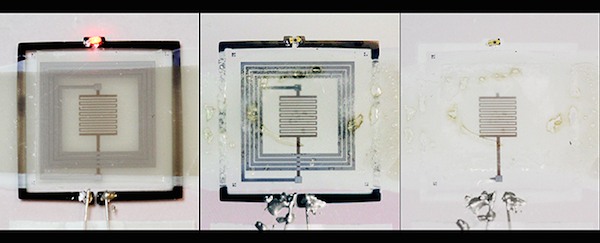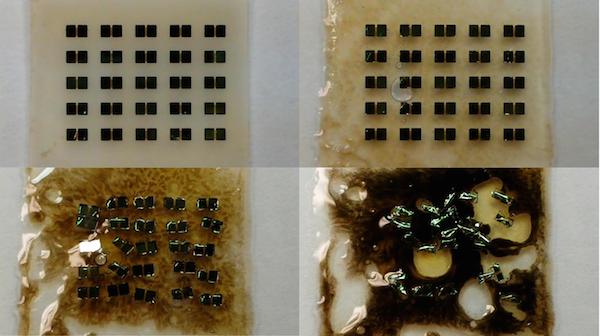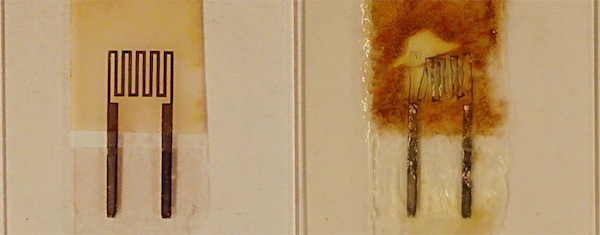
Sure, magic tricks are entertaining—but what if they could actually do something useful? (No offense, magicians.)
Maybe something like keeping surfaces free from germs (Act I), or converting cheap and abundant materials from rags to riches (Act II). Or how about doing something to address the enormous mounds of electronics waste piling up around the world?
A LiveScience article from 2013 cites that world inhabitants generated nearly 54 million tons of used electrical and electronic waste in 2012. From those figures, the U.S. found itself in the most-wasteful-country top ten list, with figures estimating that each American generated a whopping 66 pounds of e-waste per person.
And those figures are only expected to keep growing, thanks in part to the constant appearance of new must-have devices and technology.
University of Illinois researchers have innovated a solution—electronics that self-destruct on command.
“We have demonstrated electronics that are there when you need them and gone when you don’t need them anymore,” lead scientist and aerospace engineering professor Scott White says in an Illinois press release. “This is a way of creating sustainability in the materials that are used in modern-day electronics. This was our first attempt to use an environmental stimulus to trigger destruction.”
White teamed up with fellow Illinois materials scientist and thin electronics master John Rogers. (Roger’s work has appeared on CTT before, here and here.)

The University of Illinois team, from left: postdoctoral researcher Seung-Kyun Kang, graduate student Hector Lopez Hernandez, postdoctoral researcher Olivia Lee, professor John Rogers, professor Scott White, and professor Nancy Sottos. Credit: L. Brian Stauffer; U. of Illinois
So how does the self-destructing technology work?
The team printed magnesium circuits on thin flexible polymer materials, and incorporated tiny wax-encapsulated droplets of acid into the device, which is altogether also coated with wax.
Heating up the devices ever so slightly melts the wax and releases the acid, dissolving the thin electronics before your very eyes.
Tailoring the amount of wax on the device, concentration of the acid, and temperature, the team also can control how quickly the devices self-destruct, from just 20 seconds up to a couple of minutes after trigger.
And for those magicians that prefer a more mysterious remote detonation, the team’s got that covered, too. The researchers demonstrated that embedding a radio-frequency receiver and inductive heating coil in the device allows degradation on remote command.

A device is remotely triggered to self-destruct—a radio-frequency signal turns on a heating element at the center of the device. Credit: Scott White; U. of Illinois
Hear more about these novel devices from the researchers themselves in this short video below.
Credit: NewsAtIllinois; Youtube
The paper, published in Advanced Materials, is “Thermally triggered degradation of transient electronic devices” (DOI: 10.1002/adma.201501180).


